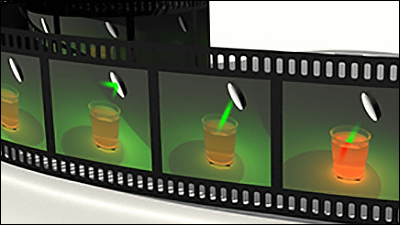An 'artificial eye' is being created that has both a reaction speed that exceeds the human eye and ultra-high resolution.

It has a structure that imitates the human eye, its reaction speed is higher than that of the human eye, and theoretically super high resolution can be realized by embedding about 460 million optical sensors per square centimeter `` artificial eye Is being researched.
A biomimetic eye with a hemispherical perovskite nanowire array retina | Nature
Artificial eye boosted by hemispherical retina
https://www.nature.com/articles/d41586-020-01420-7
A new artificial eye mimics and may outperform human eyes | Science News
https://www.sciencenews.org/article/new-artificial-eye-mimics-may-outperform-human-eyes

A team of engineers and materials scientist Ji-yong Hwan, a Hong Kong University of Science and Technology, has developed an artificial eye based on the structure of the human eye. Inside the artificial eye, an artificial retina is embedded with a nanoscale optical sensor, and the optical sensor measures the amount of light that has passed through the lens in front of the artificial eye. The wire attached to the back side of the artificial retina plays the role of the optic nerve in the eyeball by sending the signal received by the sensor to an external circuit.

Although this artificial eye does not have a telephoto function or night vision, the research team has announced that it can perform higher functions than the actual human eye.
Humans respond to changes in lighting as quickly as 40 to 150 ms, but artificial eyes can respond faster than this in 30 to 40 ms, even in dim light. The feature of this artificial eye is that the artificial retina has a dome shape like the human retina, and although this does not match the 150-degree visual field that humans have, the 70-degree artificial retina has a flat surface. It realizes a 100-degree field of view, which is wider than the field of view.
In addition, about 460 million optical sensors are embedded in the artificial retina per square centimeter, and considering that the human eye has about 10 million photo-detecting cells per square centimeter, theoretically humans You can perceive a higher resolution than your eyes. However, at the time of article creation, each wire connected to the back side of the retina has a thickness of 1 mm, so only about 100 wires can fit on the back side of the artificial retina, and the research team will obtain a 100 pixel image. States.

In order to further increase the resolution of the artificial eye, Mr. Huang and colleagues are making a 'surgery-like' attempt to connect a thinner wire to the artificial eye using a magnetic field.
However, Hengului Jiang, an engineer at the University of Wisconsin, said, 'The current method of making ultra-small pixels is not practical,' although hundreds of nanowires work fine, but what? The view is that using the millions of wires does not work. In order to create visual acuity beyond humans, Jean points out that it is necessary to find an efficient way to arrange a large number of tiny wires.
Related Posts:
in Science, Posted by darkhorse_log







